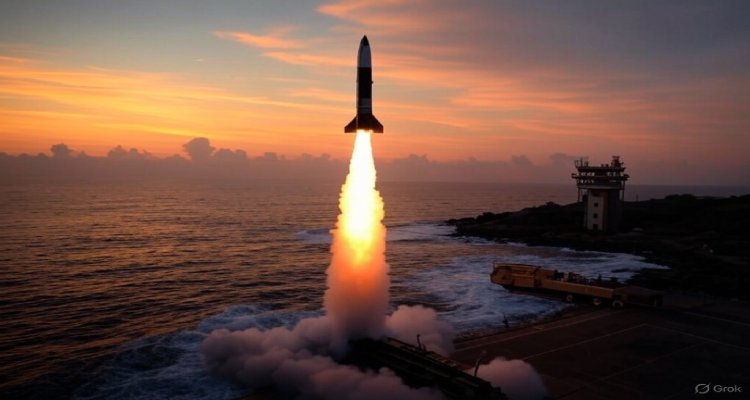BrahMos Missile: Why It’s Unstoppable in Modern Warfare
India’s BrahMos missile, used in Operation Sindoor, is a supersonic game-changer—too fast to intercept and built for precision.
BrahMos Missile: Why It’s Unstoppable in Modern Warfare
In the high-stakes world of modern combat, milliseconds can mean the difference between success and disaster. That’s exactly why India’s BrahMos missile has emerged as a tactical game-changer—proven most recently during Operation Sindoor, a strategic strike deep inside Pakistani territory. With unmatched speed, pinpoint accuracy, and virtual immunity from interception, this missile system is drawing international attention and reshaping the global defense landscape.
Operation Sindoor: A Tactical Masterstroke with BrahMos
During the covert Operation Sindoor, Indian forces reportedly launched a series of precision strikes on targets inside Pakistan and Pakistan-occupied Kashmir. Islamabad’s confirmation of damages after a ceasefire added weight to reports that BrahMos missiles played a pivotal role. Among the most notable outcomes was the damage to key infrastructure, including Pakistan’s Sargodha airbase, captured through satellite imagery.
These weren’t random strikes. They were strategic hits on vital airbases and terror camps, carried out with surgical precision. According to Dr. Sudhir Kumar Mishra, former Director General at DRDO and a key figure behind the missile’s development, BrahMos is virtually impossible to intercept, even by the most advanced air defense systems of China, Pakistan—or anyone else for that matter.
Supersonic Speed and Stealth: The BrahMos Edge
What sets BrahMos apart is its supersonic velocity of Mach 2.8 to 3.0, making it at least three times faster than subsonic cruise missiles like the U.S. Tomahawk. This means the enemy has mere seconds to detect, track, and attempt interception—a near-impossible feat.
Dr. Mishra explained, “BrahMos cannot be stopped by any known defense system in the world. It’s that fast and that agile.” Its ability to fly at low altitudes and perform complex maneuvers makes radar detection extremely difficult.
Built for Versatility, Designed for Precision
The BrahMos isn’t just fast—it’s versatile. With land-to-land, ship-to-land, and air-launched variants, it can be deployed across multiple platforms, including Sukhoi-30 fighter jets. This flexibility means India can strike targets across terrains and regions without warning.
Recent upgrades have extended its range from 300 kilometers to nearly 800 kilometers, increasing its strategic reach dramatically. Despite its extended range, the missile maintains a pinpoint accuracy, which Dr. Mishra described as being “accurate to the pinpoint level.”
It carries a conventional warhead, capable of massive structural damage—perfect for disabling runways, bunkers, or critical enemy installations in a single shot.
Indigenous and Unmatched: India’s Technological Leap
While many countries rely on international partnerships for advanced military tech, BrahMos stands out as a symbol of India’s indigenous defense capabilities. Co-developed with Russia, it is currently the only liquid-fueled supersonic cruise missile in operational use—a feature neither the U.S. nor China has achieved.
“We’re not just buyers of technology. We’ve mastered it. The BrahMos is built here, upgraded here, and ready to meet any requirement of the Indian Armed Forces,” Dr. Mishra emphasized.
Changing the Rules of Aerial Combat
The era of dogfights and prolonged air battles is fading. With precision-guided missiles like BrahMos, modern aerial combat is increasingly about who strikes first—and accurately.
“If an aircraft locks on with a missile like BrahMos, it’s almost impossible for the target to evade,” Mishra added. This strategic shift has forced adversaries to rethink how they engage and defend their airspace.
Final Thoughts: A Weapon of Deterrence and Precision
Operation Sindoor offered a glimpse into India’s evolving military doctrine—one that prioritizes speed, accuracy, and technological dominance. The BrahMos missile isn’t just a weapon; it’s a symbol of deterrence, signaling that India can—and will—neutralize threats decisively when required.
As regional tensions ebb and flow, BrahMos ensures India remains not just a passive observer but a commanding force in modern warfare. With continued upgrades and evolving deployment strategies, the missile is likely to remain at the heart of India’s defense playbook for years to come.
Disclaimer:
This article is based on publicly available statements, news reports, and interviews with defense experts. Operational details involving national security may not be fully disclosed due to their classified nature.
source : News18











